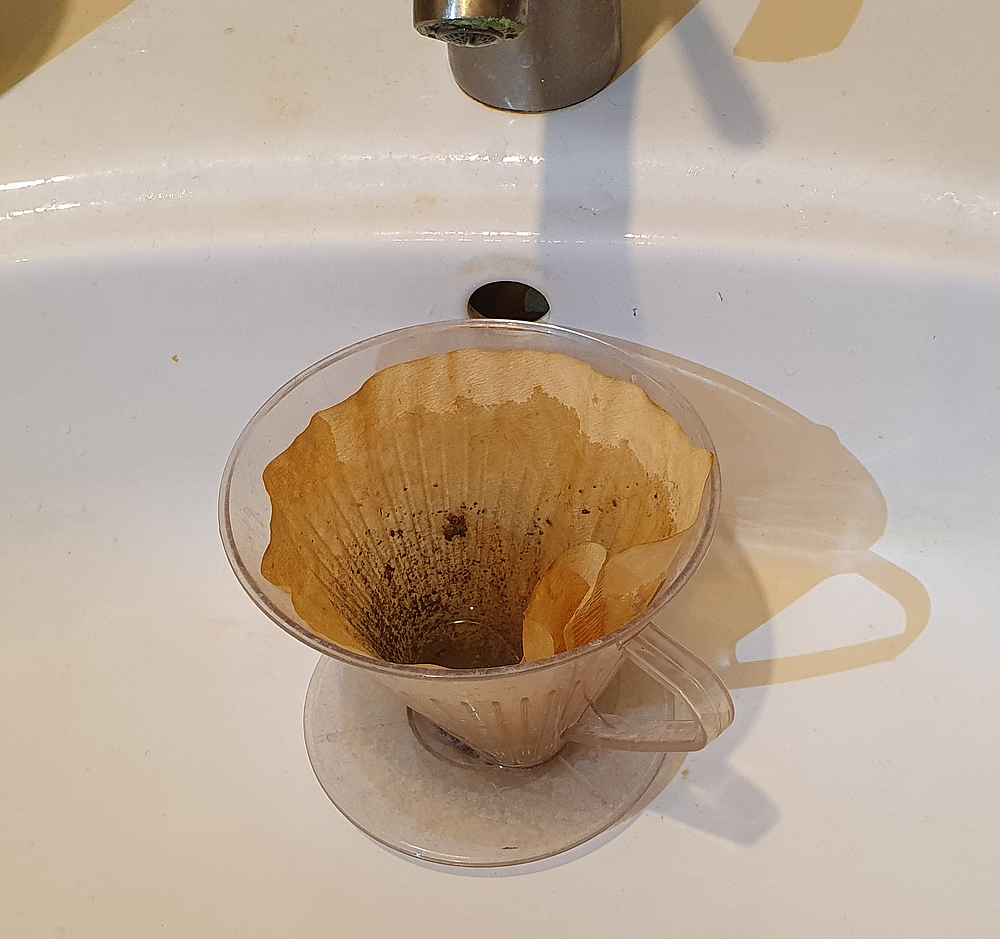Disposal of the lubricant

Fig: My grinding mud filter in action
When water or oil is used as a lubricant, it inevitably forms a type of grinding sludge that must eventually be disposed of. After all, metal dust is generated, which should not settle in the stone. And also the dressing of the grindstone results in a particularly large amount of mud. The mud consists of metal dust, lubricant and ceramic components. At most, the lubricant is an environmental problem.
With water stones, the matter is relatively simple: Water is certainly not a danger to the environment. However, I would not want such a mixture in my drain pipes. Therefore, I filter out the mud (see picture above) and then dispose of it dried in the residual waste. Filtering can actually be done after each sharpening.
It's a different story with oil stones: they're usually very hard, and you rarely have to dress them. But at some point, you'll want to remove the metal residue there, too. Then you are more likely to wipe such a stone with paper and dispose of the paper somehow. But how? Residual waste??? I need to clarify that in more detail. This should certainly not get into the sewage system!
also tricky is the matter of aqueous rust inhibitors. You have to read the small print of the respective manufacturer. E.g. Tormek writes in the safety data sheet: "Avoid discharges to the sewer system".
if you do not use any lubrication at all, there is nothing to dispose of except the dust generated during the grinding itself. An extraction system seems to me to be rather overkill (also watch out for sparks!). You can perhaps be careful not to stir up the dust and get rid of it with a vacuum cleaner after sanding, or wipe it off with a damp cloth.